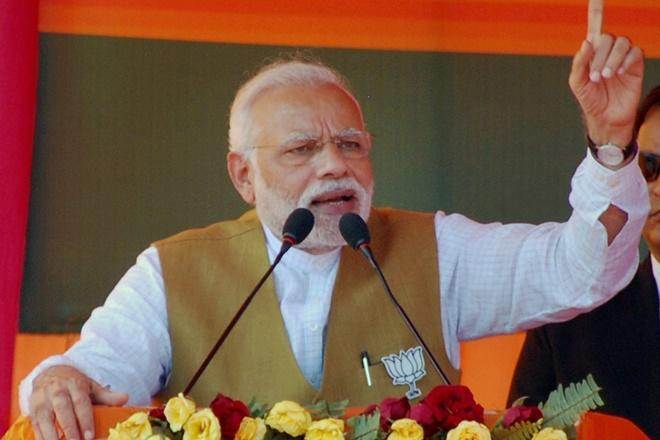The current BJP government at the Centre has exercised power by itself and without allies (unlike the Atal Bihari Vajpayee government which did not have a majority by itself in Parliament). The earlier non-Congress government (Janata Party) was a hotchpotch, united only by opposition to Indira Gandhi. It had no unifying set of policies or ideologies to hold it together. Is the current BJP government strikingly different in policies from the earlier Congress-led governments?
Unlike them (except that of PV Narasimha Rao), the current government has majority only in the Lok Sabha. Its freedom to pass legislation is constrained. Even if it wants to, dramatic changes are beyond it. Unlike Vajpayee, who had a networked George Fernandes to liaise with other parties, and Vajpayee’s own Parliamentary experience, this government has no such liaison. Its attitude towards the Opposition veers to arrogance and contempt. The lack of Parliamentary experience among many of its leaders is a disadvantage.
The Congress, from the time of Jawaharlal Nehru and Indira Gandhi, had clear ideologies. It was ‘socialist’ in economic policies. This meant government ownership and control over natural resources, most financial resources, infrastructure and key enterprises, and detailed control over private enterprises. It was not favourably disposed to foreign investment and placed many blocks to the import of technology. Exports were not a major policy thrust.
You May Also Want To Watch:
Foreign policy was ‘non-aligned’, with a tilt towards Russia and some hostility towards the US. Towards Pakistan, the attitude was patient but firm. It trusted China and paid in consequence. It made little effort to befriend rest of Asia.
Its social policies were to give subsidised essentials in kind, involving vast procurement, storage and distribution. This extent of government involvement in the economy inevitably led to mismanagement, corruption and waste.
Vajpayee continued Congress policies but modified them. There was some privatisation of public enterprises (but not of financial institutions) and disinvestment in others to raise funds, while retaining management. Considerable investment was made in infrastructure and rural connectivity. There was some reaching out to the rest of Asia and attempts were made to thaw relations with Pakistan. Innovative social schemes were introduced but there was no change in the subsidy culture.
The current government has taken measures to fight corruption. Both Vajpayee and Narendra Modi governments have experienced far less charges of corruption than Congress. There have been agreements to close money laundering of hawala remittances to Mauritius and others. They will bear Indian capital gains taxes within three years (against the earlier zero). The anonymous ‘participatory notes’ invested by Singapore banks for Indian hawala remitters to Singapore will also go. An amnesty led to over R60,000 crore of black money being revealed. Demonetisation disclosed thousands who had evaded taxes. But big fish have not been caught. The attempt to get banks overseas to disclose Indian account holders has not succeeded.
The complex web of rules and procedures is the prime cause of corruption. Another is the weak and varying property and sales taxes between state governments. Ineffective and corrupt tax collectors are yet another. The GST attempts to make uniform and tighten tax rates and collections. This government has started in a small way to fight corruption. It has a long way to go.
Ease of doing business has also improved, especially for foreign investors. But without drastic administrative reforms to increase individual accountability, there will be little change.
This government has continued disinvestment, but there is no sign of giving up government ownership of enterprises and distancing government from their management. It has increased public and foreign investment in infrastructure, but private investment is in the doldrums. A reason is the control over financial institutions. On the side of social benefits, the earlier schemes continue, some under new names. Direct bank transfer of benefits is talked about but the administrative system may not be able to handle it efficiently and honestly.
Agricultural policies have experienced utter lack of coordination between R&D, outreach of new technologies to farmers, coordinating cropping patterns with ground water depletion, electricity at below cost or free, support prices that take account of water usage, etc.
At the recommendation of the Finance Commission, there is a rise in transfer of grants from tax revenues to states. Many social schemes are to be implemented by them. There is no sign of monitoring spending and its effectiveness.
The most visible difference is in foreign policy. Without saying as much, India has moved closer to the US, in defence purchases, becoming a fulcrum against China along with Japan and others. Policies towards Pakistan are coordinated internationally. In this, it has moved farther than Vajpayee. On China, this government is moving with caution but might be emboldened as President Donald Trump acts against China’s dumping of goods in export markets, and its militaristic ventures.
Unlike the Congress, the BJP has not articulated an ideology or economic, foreign and social policies.
During 67 years of independence, few governments tried to transform India, and perhaps only Narasimha Rao succeeded in releasing the Indian entrepreneurial spirit. But ministries that worked in silos dampened this spirit. The detailed scrutiny by many government departments, the many inspections, rules and regulations, in addition to government ownership and control of most financial and natural resources, introduced by Indira Gandhi’s government, dampened enterprise. There is no sign of any radical reversal of the mindset and systems she introduced. The wielding of power that she enabled is not something that any government wants to surrender. India’s transformation will come from its people, not from venal political leaderships.
The author is former director general, NCAER, and was the first chairman of CERC. Views are personal


